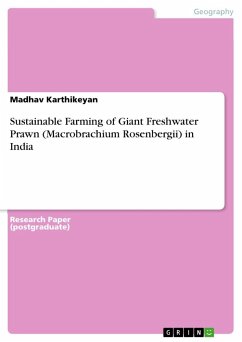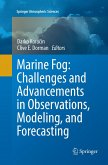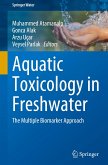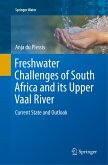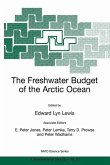Research Paper (postgraduate) from the year 2023 in the subject Geography / Earth Science - Oceanography, , language: English, abstract: Freshwater prawns, commonly known as Macrobranchium rosenbergii, are one of the most significant species for aquaculture worldwide. They are widely cultured for their high-quality meat, which is rich in protein, and they are also in high demand in the food industry. Unlike marine shrimps, freshwater prawns have a more extended culture period and face several challenges, making their culture a complex process. The primary concern in culturing giant freshwater prawns is growth suppression caused by morphological variations within a population. The life cycle of the giant freshwater prawn has three distinct morphological stages: small-clawed, orange-clawed, and blue-clawed individuals. Growth reduction is especially prevalent in male populations due to their aggressive behavior. The social organization of prawns is a crucial factor to consider. In a prawn population, individuals are suppressed in the following order: small-clawed < orange-clawed < blue-clawed. Although culling can be somewhat effective, frequent partial harvesting and segregation of weak and small-clawed individuals can increase profits. This technique ensures that the larger and stronger individuals are not suppressed by their weaker counterparts, leading to better growth rates and higher yields. This article proposes several techniques for enhancing the yield of scampi farming. These techniques include adjusting culture conditions, feeding practices, and water quality parameters. All of these factors play a significant role in the growth and development of freshwater prawns, and optimizing them can lead to increased yield and profitability. In conclusion, freshwater prawns are a valuable aquaculture species, and their culture requires careful management to ensure optimal growth and yield. By applying the techniques proposed in this article, farmers can improve their production and meet the growing demand for high-quality freshwater prawns.
Hinweis: Dieser Artikel kann nur an eine deutsche Lieferadresse ausgeliefert werden.
Hinweis: Dieser Artikel kann nur an eine deutsche Lieferadresse ausgeliefert werden.

